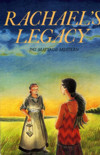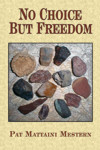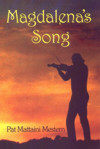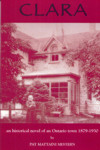Musings
An Ode to Charlie’s Bridges
I went bridging the other day, something that I do once in a while to pay my last respects to a bowstring. Lilacs were in bloom and the drive along scenic country roads lifted my spirits – until I turned the corner and saw the bridge which is slated for demolition very soon. The span’s unusual concrete bows stood out against the multi-layers of green on river banks that highlight spring in southern Ontario.
There was no need for me to worry about being run down while standing on the bridge. The structure has been condemned as being unsafe and the roads leading to it have been closed for some time. Swallows swooped for bugs and dived under the structure not knowing that in a few days their home would be destroyed. A deer with a fawn by her side, picked her way to the water’s edge, not afraid of man’s intrusion – not yet anyway. A pair of Canada Geese with their brood of nine goslings rode the current downstream. Last week a neighbour mentioned that a cougar had been sighted in the area. This valley is a little bit of paradise. The unobtrusive but beautiful bowstring bridge with its delicate arches fits into the landscape, like fingers to a glove.
My grandfather, Charlie Mattaini built this bridge in the early 1920’s, one of many in the same design. His work crew camped along the bank for the duration of the job. The men were responsible for cooking breakfast and supper but the wife of the farmer on the south hill was paid to cook a hearty noon meal for gang. One member of that gang was my father, J. F. (Jimmy) Mattaini, a lad of twelve whose job was to run water from an ever-flowing spring on the hillside to the thirsty men.



Charles Borromeo Mattaini, the man behind this concrete bowstring bridge design, was born in 1873 in the village of Vergiate, Italy in 1873. Vergiate is nestled in the hills on the south-east shore of Lake Maggiore near the border with Switzerland. Charlie came by his love for working with concrete naturally. The building material has been used for centuries in construction in Italy – and anywhere else where the Romans had influence over architecture. Many of Charlie’s ancestors were well-versed at building concrete structures, including arched viaducts, aquaducts and vehicular bridges.
Charlie further honed his talents for building – and dynamiting – while serving in the Italian army, especially during the African/Ethiopian campaign. He especially excelled in the art of working with dynamite. As my grandmother, Marie mused, he was fearless around dynamite but wouldn’t train any of his men to use it because they had families – Too dangerous for a papa, he’d say. Charlie boasted that with just a tiny bit of explosive and a lot of luck, he could remove a flea from an elephant’s back without hurting the elephant. Fortunately, he never had to prove that boast.
Before emigrating to Canada during the early 1890’s Charlie worked on tunnel projects between Switzerland and Italy. He always gave credit to his supervisors on those jobs for imparting further valuable knowledge on the construction of arches, concrete and stonemasonry during this time.
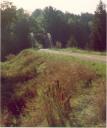


After Charlie arrived in Canada, he came to West Garafraxa Township, Wellington County where he lived with his sister who had married a Landoni – the Landoni families came from the same village in Italy. He soon found work in the Landoni brickyards and during this time met Maria Landoni. Maria (Marie) became Charlie’s wife in 1903 when she was eighteen and he was thirty.
In 1896, Charlie started a construction company that specialized in concrete barn foundations, concrete corner fenceposts and formed concrete “stones” for innovative home construction around Wellington County. These formed-concrete stones were the precursor for today’s concrete blocks.
Charlie immediately began to experiment with making decorative garden statuary and vases from form-molds but found that the market was not ready for such items. After all, he’d say later in life, he had settled in the middle of an area that had a large Scots Presbyterian population. Their idea of garden decoration might be to erect a privacy fence. The statue of a nude woman? Not likely. On the other hand, the Irish immigrants were very impressed by his statuary but usually didn’t have the money to buy the product. And, until after the First World War, with the exception of the Landoni and Mattaini families, there were few Italians settled in the area.
Hearing that Council planned to contract for a number of bridges in Wellington County which was crisscrossed by many streams, rills and rivers, Charlie turned his attention to above-deck bridge construction – designing variations of a picturesque arched design. For his first quote to County Council, knowing full-well that he’d not yet constructed a bridge, Charlie submitted a sketch that utilized both lower supporting concrete arches and an artistic, delicate looking, upper bowstring structure.

Grandmother said that he was the most surprised when, after submitted the proposal and quote, County Council actually chose Charlie’s company to construct the bridge. Of course, there was argument about the design – some staid individuals wanted tradition over art – but Charlie’s design intrigued enough councillors that they wanted to see it built. Perhaps a little libation-bribery on the side helped move the decision along? Charlie did make excellent wine and handed it out freely, in direct opposition to the members of the local temperance society who tried on a number of occasions to shut his wine-making operation down. Rumour has it that he made good whiskey too – hid his still in his lumber yard and told everyone that the rising steam was from his kiln.
Charlie quickly rose to the County Council challenge and fine-tuned
his design to incorporate iron rod-reinforced arches above the bridge floor which mirrored sturdy concrete arches below deck that took the main structural load. The design of the upper structure was both a salute to his homeland, and his contribution to Canada’s built heritage/landscape – a gift to Canada, Charlie said.
Bow-string bridges became Charlie’s passion. Between 1902 and 1930 more than seventy bridges and culverts were built, of varying sizes. Most span waters in Wellington and Waterloo counties. A few were constructed further afield in Bruce and Grey Counties with several erected around Streetsville and Milton near Lake Ontario.
Because of the number of bowstrings built each summer, Charlie personally took on the task of building one and put crews of ten-twelve
experienced men on the other two- three projects. Each project was overseen by a foreman who at the end of construction was allowed to put his name in the wet concrete on the bridge. Hence some of the bridges are signatured by “Johnny Cornpone ” or “George Who-done-it”. One bridge in the northern part of the county has – “Contractor: Marie Mattaini” – a joke that Charlie played on his wife because Maria was nowhere near the bridge during its construction and certainly wasn’t the contractor.
Charlie didn’t patent his design. As he said, it is for, and of, the world – my contribution to my chosen country. He worked closely with people like engineers Barber and Young to fine-tune the design. After the Depression, in which Charlie lost all his money – close to two million, five-hundred-thousand dollars – a fortune in those days, Barber and Young took up the cause and built a number of super-spans, bridges with three-five-seven arches, some spanning the Grand River in Kitchener, Cambridge and Toronto. Hence, Charlie’s basic design lived on.
Today, unfortunately, the number of Charlie’s bridges left standing in the County number in the teens. County Councils haven’t seen the need to restore any of the spans. Recently, one bowstring, through the generosity of bridge contractors, has been moved to the local museum property between Fergus and Elora. Another was saved in Clarksburg near Thornbury. Through a flash of brilliant planning by those in charge, this particular bridge has been fully restored.
Although a number of people have documented Charlie’s bridges for picture- posterity, there is no greater thrill then standing on, a Charlie’s bridge, knowing the history behind the design. And, there is no greater sorrow than standing on a Charlie’s bridge, knowing that it will be destroyed in a matter of days.





